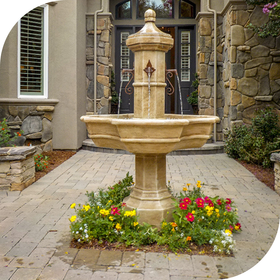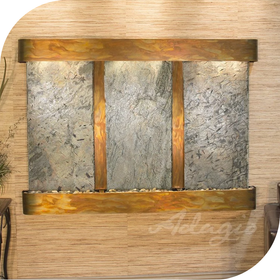Overview
Winterizing your outdoor fountain is essential to prevent damage from freezing, protect the pump, and maintain aesthetics. Follow these steps: turn off the power, drain and clean the fountain, remove the pump, protect the basin, cover the fountain, and monitor temperatures. In spring, inspect and reassemble your fountain. Consider enhancing the area with decorative stones, plants, and lighting.
As the winter months approach, many homeowners with outdoor fountains need to prepare their water features for the cold weather. Properly winterizing your fountain ensures longevity and keeps it looking beautiful in your yard throughout the seasons. Whether you have a stunning bird bath fountain, a concrete fountain, or any other type of garden water features, this step-by-step guide will help you navigate the process of protecting your fountain from the harsh winter climate.
Why Winterizing Your Outdoor Fountain is Important
Winterizing is essential for several reasons:
-
Prevents Damage: Water can freeze within the fountain, leading to cracks or other structural damage.
-
Protects Pump: Many outdoor fountains have pumps that can be susceptible to freezing and burning out if not properly prepared.
-
Maintains Aesthetics: A well-maintained fountain keeps your garden fountain looking pristine and inviting.
Step 1: Turn Off Power Supply
Before you begin to winterize your fountain, ensure that you turn off the power supply to the pump. Most solar water features will need to be switched off as well. If your fountain operates on electricity, unplug it to prevent any potential hazards.
Step 2: Remove Water
Start draining your fountain. This step is crucial to prevent any frozen water from expanding within the fountain:
-
For larger fountains: Use a wet/dry vacuum to remove as much water as possible.
-
For smaller bird bath fountains: Simply empty the bird bath bowl by tilting it and allowing the water to pour out.
Step 3: Clean Your Fountain
Once the water is removed, carry out a thorough cleaning:
- Use a soft scrub brush and a mixture of water and mild detergent to scrub away dirt, slime, and mineral deposits.
- Rinse thoroughly with clean water to ensure no soap residue remains.
Step 4: Remove the Pump
The pump is one of the most crucial components of your fountain. To protect it:
- Carefully disconnect the pump from the fountain and remove any tubes or hoses attached.
- Store the pump in a dry location. Adding some protective padding will help prevent any mechanical damage while in storage.
Step 5: Prepare Any Garden Accessories
If you have additional elements like a solar waterfall fountain or other garden water features, take similar care:
- Remove any small accessories that could be damaged by freezing temperatures.
- Consider investing in covers for larger features to prevent debris accumulation.
Step 6: Winterize the Fountain Basin
After cleaning and emptying the fountain, take measures to protect the basin:
- For concrete fountains, applying a sealant can help protect against water absorption and freezing.
- If your fountain has a removable basin, store it inside during the cold months.
Step 7: Protect from Freezing Temperatures
To prevent freeze damage:
- Consider covering the fountain with a breathable cover that allows moisture to escape while protecting it from snow and ice.
- For larger outdoor fountains, you could use hay or straw around the base for insulation.
Step 8: Monitor Temperature Changes
As winter settles in, keep an eye on the temperatures:
- If you experience a sudden drop in temperature, ensure that all steps have been appropriately taken.
- In particularly cold areas, you may wish to invest in a heated pump or de-icer for your solar powered water feature.
Step 9: Come Spring, Reassemble and Inspect
Once the cold weather has passed and spring arrives, it’s essential to check your fountain before putting it back to use:
- Inspect the basin and pump for any damage.
- Remove any accumulated debris from the winter months.
Fun Ideas to Enhance Your Fountain Area
After winterizing and as the garden comes back to life in spring, consider enhancing your fountain area with:
-
Decorative Stones: Arrange beautiful stones around the fountain for added aesthetics.
-
Plants: Consider planting flowering perennials or ornamental grasses nearby to bring color and vibrancy.
-
Lighting: Install solar lights to highlight your fountain during the night.
Exploring Additional Bird Bath Options
While considering enhancing your garden, think about incorporating a variety of bird baths:
-
Ceramic Bird Bath: With vibrant colors and designs, these can be a stunning centerpiece.
-
Stone Bird Bath: Offers a natural look that blends beautifully into garden settings.
-
Concrete Bird Bath: Extremely durable and can withstand varying temperatures.
-
Solar Bird Bath Fountain: The perfect addition for creating a lively atmosphere while providing water for birds.
Winter Wonderful: Your Fountain’s Lifelong Care
Winterizing your outdoor fountain doesn’t have to be a daunting task. By following this step-by-step guide, you can ensure that your fountain remains intact and inviting season after season. Whether it’s a stunning garden fountain or a tranquil bird bath, maintaining these lovely garden features can provide charm and character to your space. Taking the time to prepare for winter allows for a seamless transition into spring, where you can enjoy the beauty and soothing sounds of your fountains and outdoor decor once again.






Leave a comment